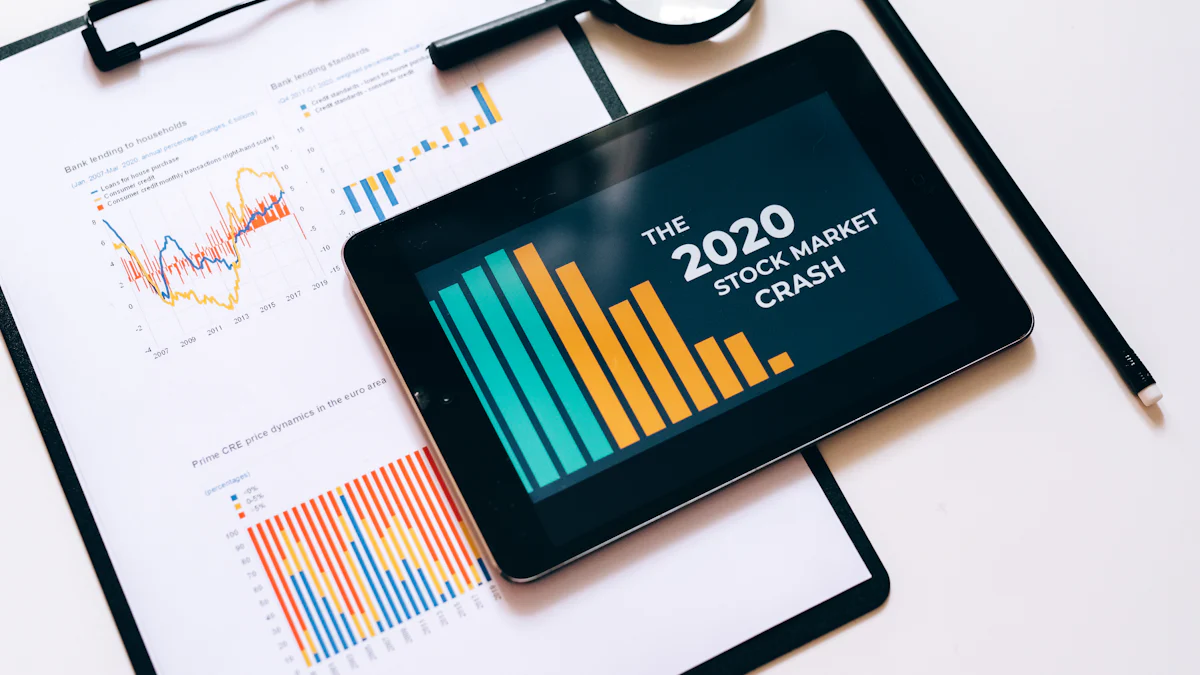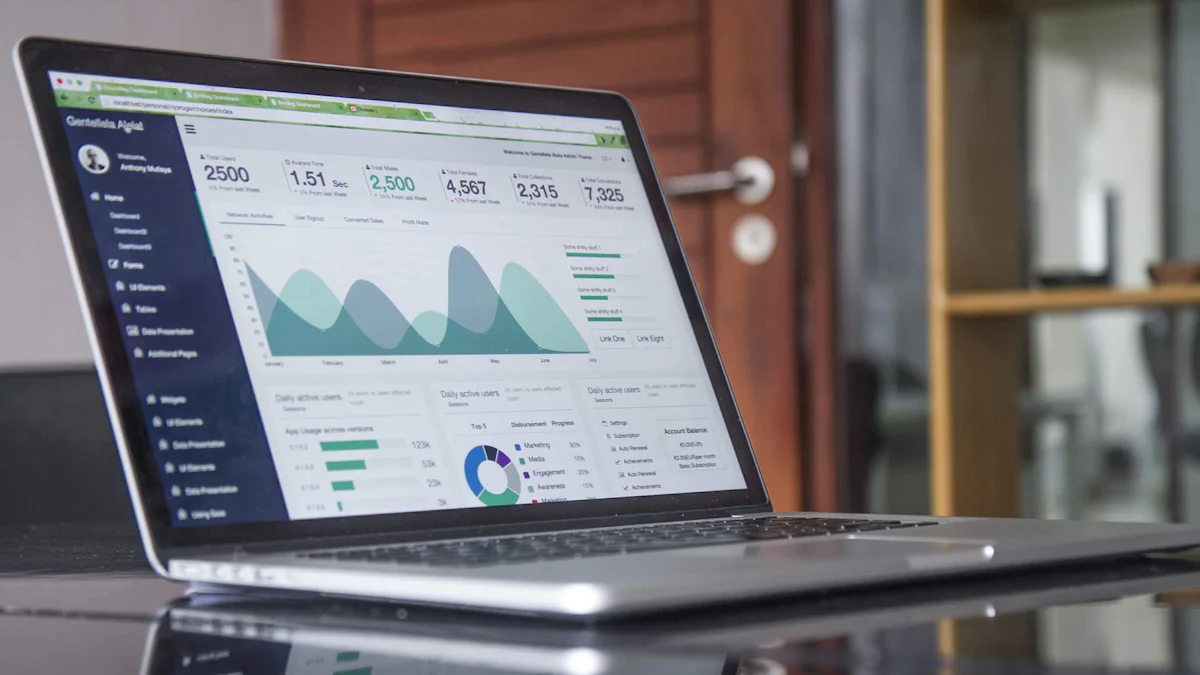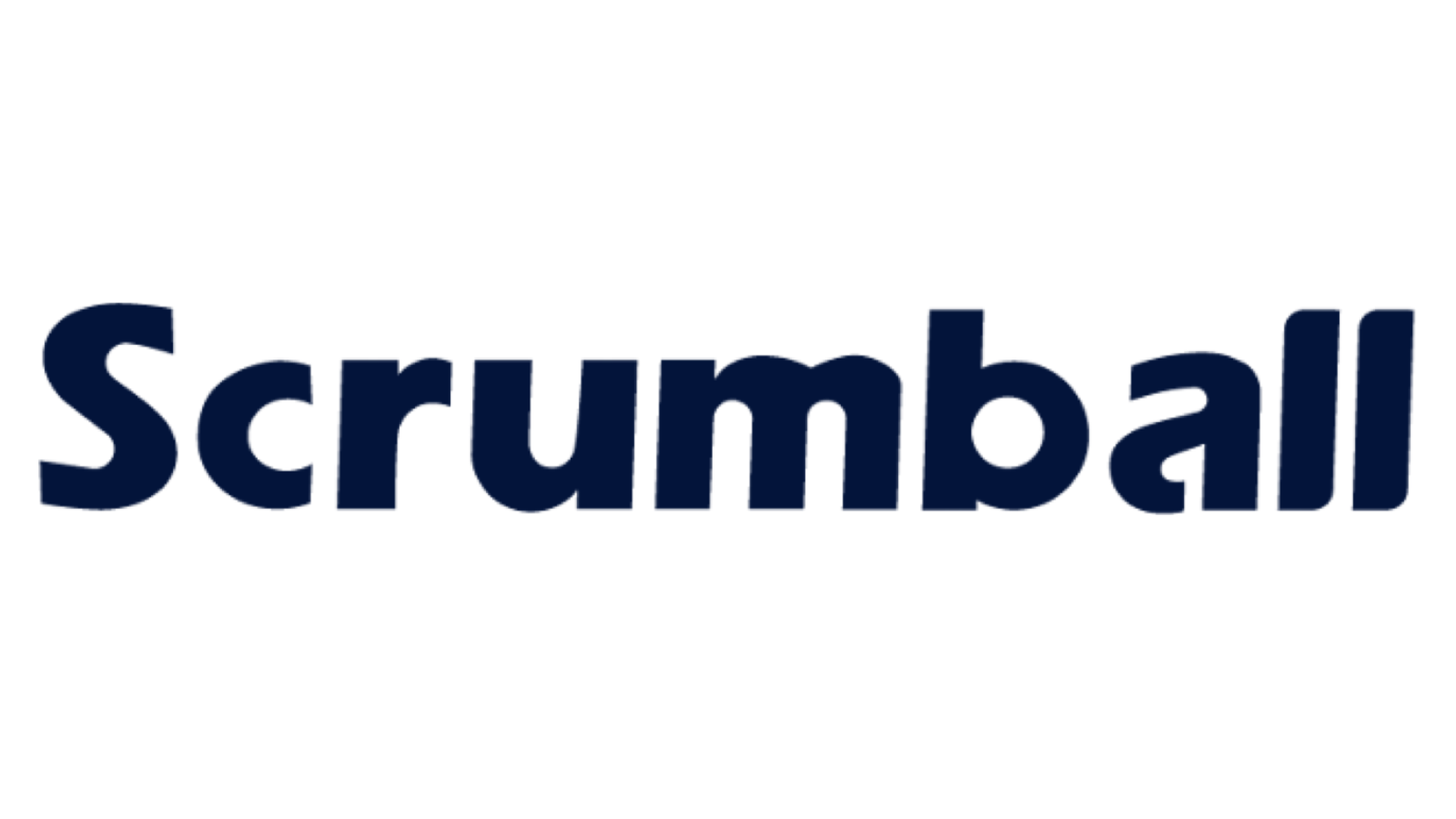How to Calculate Marketing Automation ROI Effectively in 2025

In 2025, calculating marketing automation ROI has become essential for businesses aiming to stay competitive. With 75% of companies now using automation tools and 91% of marketers considering them indispensable, understanding ROI ensures you make the most of these investments. It helps you allocate resources effectively, prioritize profitable initiatives, and avoid costly mistakes. For example, regular ROI analysis can reveal which campaigns drive the highest returns, allowing you to focus on what works best. By mastering ROI calculations, you can optimize your marketing efforts and boost profitability in a rapidly evolving market.
| Statistic | Value |
|---|---|
| Percentage of businesses using automation tools | 75% |
| Marketers considering automation essential | 91% |
| HubSpot market share | 29.51% |
| Marketers using multiple automation tools | 90% |
| Marketers intending to adopt automation | 40% |
| Expected market size by 2026 | $19.66 billion |
Understanding Marketing Automation ROI

What Is Marketing Automation ROI?
Marketing automation ROI refers to the return on investment you achieve from using automation tools in your marketing operations. It measures how effectively these tools contribute to your business goals, such as increasing sales growth or improving customer retention. To calculate this, you compare the revenue generated through automation with the total costs incurred. This metric helps you understand whether your marketing automation efforts are delivering true ROI or falling short of expectations.
Key components that define marketing automation ROI include:
- Conversion Rate: Tracks how well your campaigns turn leads into customers.
- Customer Acquisition Cost (CAC): Measures the cost of acquiring a new customer through automated efforts.
- Revenue Generated: Evaluates the financial impact of your marketing campaigns.
| Metric | Description |
|---|---|
| Lead conversion rate | Measures the percentage of leads converted into paying customers through automated efforts. |
| Customer acquisition cost (CAC) | Total cost incurred to acquire a new customer through marketing automation efforts. |
| Revenue generated | Tracks the revenue from automated campaigns to assess overall impact on the bottom line. |
The Value of Marketing Automation in 2025
The value of marketing automation continues to grow in 2025. Businesses increasingly rely on these tools to streamline marketing operations and improve efficiency. The global marketing automation market, valued at $6.36 billion in 2024, is projected to reach $17.36 billion by 2034. This growth reflects the rising demand for personalized marketing solutions and advanced technologies like artificial intelligence and big data analytics.
Automation enables you to deliver consistent, personalized experiences across multiple channels. For example, omnichannel marketing has become essential, as 90% of device owners switch between three devices daily. Tools like chatbots and social media automation also enhance customer engagement, driving better results for your marketing campaigns. By leveraging these trends, you can maximize the value of marketing automation and achieve measurable sales growth.
Why Measuring ROI Matters for Businesses
Measuring and optimizing marketing automation ROI is critical for ensuring your investments deliver results. It allows you to identify which strategies work and which need improvement. Businesses prioritize ROI measurement for several reasons:
- Efficiency and Time Savings: Automation reduces repetitive tasks, freeing up time for strategic planning.
- Lead Nurturing and Personalization: Automated tools help you build stronger relationships with leads through tailored communication.
- Scalability and Consistency: Automation ensures your marketing campaigns remain effective as your business grows.
By focusing on effective marketing measurement, you can align your efforts with industry benchmarks for marketing automation ROI. This approach ensures your marketing operations contribute to long-term profitability and sustainable growth.
How to Calculate Marketing Automation ROI
The Formula to Calculate ROI
To calculate your marketing automation ROI, you need to compare the revenue generated from your marketing automation tools with the total costs incurred. This formula provides a clear picture of how effectively your investment is driving results.
| Metric | Formula |
|---|---|
| ROI | ((Revenue Generated - Total Costs) / Total Costs) * 100 |
Revenue Generated from Marketing Automation
Revenue generated refers to the income directly attributed to your marketing automation efforts. This includes sales from automated campaigns, upselling, and cross-selling opportunities. For example, tracking metrics like lead conversion rate and marketing qualified leads (MQLs) can help you identify the financial impact of your campaigns.
Total Costs of Marketing Automation
Total costs include all expenses related to your marketing automation tools. These may involve subscription fees, implementation costs, training, and any additional resources required to run your campaigns. Calculating these costs accurately ensures you get a realistic view of your ROI.
| Metric | Formula |
|---|---|
| Customer Acquisition Cost (CAC) | (Total Marketing and Sales Costs / Number of New Customers Acquired) |
Example of Calculating Marketing Automation ROI
Let’s break down an example to make this clearer. Suppose your business generated $50,000 in revenue from automated campaigns over a quarter. The total cost of your marketing automation tools, including software and training, was $10,000. Using the formula:
ROI = (($50,000 - $10,000) / $10,000) * 100 = 400%
This means your marketing automation efforts delivered a 400% return on investment. Metrics like email open rates and time saved on manual tasks can further validate this success. For instance, Gilt Groupe achieved a 12% revenue increase by using personalized emails in their automated campaigns.
Tools to Simplify ROI Calculations
Several tools can help you calculate ROI efficiently. These tools provide insights into metrics like conversion rates, lead quality, and customer acquisition costs.
- Google Analytics: Tracks website traffic and conversions.
- HubSpot: Offers detailed ROI tracking for inbound marketing campaigns.
- Salesforce Marketing Cloud: Provides advanced ROI measurement, including multi-touch attribution.
When choosing a tool, prioritize ease of use, integration capabilities, and customization options. These features ensure you can tailor reports to your specific needs and streamline the process of calculating return on investment.
Key Metrics to Calculate Marketing Automation ROI
Lead Conversion Rate
Lead conversion rate measures how effectively your marketing campaigns turn leads into paying customers. This metric plays a crucial role in determining marketing automation ROI. A high conversion rate indicates that your automated campaigns successfully nurture leads into customers. Tracking this metric helps you evaluate the performance of your marketing operations and identify areas for improvement.
You can calculate the lead conversion rate by dividing the number of converted leads by the total number of leads and multiplying the result by 100. For example, if 200 leads out of 1,000 become customers, your conversion rate is 20%. A higher rate reflects effective lead nurturing and positively impacts your campaign attributable ROI.
Monitoring this metric also helps you assess the revenue impact of your marketing efforts. By improving lead conversion rates, you can drive sales growth and achieve true ROI from your marketing automation tools.
Customer Acquisition Cost (CAC)
Customer acquisition cost (CAC) measures the cost-effectiveness of your strategies to acquire new customers. It is a critical metric for evaluating marketing ROI. Lowering CAC improves profitability and enhances the return on your marketing automation investments.
To calculate CAC, divide the total marketing and sales costs by the number of new customers acquired. For instance, if you spend $10,000 on marketing operations and gain 100 customers, your CAC is $100. Reducing this cost through targeted advertising, lead nurturing, and referral programs can significantly boost your campaign attributable ROI.
By focusing on CAC, you can optimize your marketing performance and ensure your marketing campaigns deliver measurable results.
Customer Lifetime Value (CLV)
Customer lifetime value (CLV) quantifies the total revenue a customer generates during their relationship with your business. This metric is essential for assessing the effectiveness of your marketing automation initiatives. A higher CLV indicates successful marketing efforts and contributes to long-term sales growth.
You can calculate CLV using the formula: Average transaction value × Number of transactions + Retention period. For example, if a customer spends $500 annually for five years, their CLV is $2,500. Enhancing CLV through personalized marketing campaigns and multi-touch attribution strategies improves your marketing ROI.
By focusing on CLV, you can maximize the revenue impact of your marketing operations and foster sustainable business growth.
Campaign Performance Metrics
Tracking campaign performance metrics is essential for understanding how well your marketing operations contribute to your goals. These metrics provide actionable insights into the effectiveness of your marketing campaigns and help you achieve true ROI. By focusing on the right data, you can identify areas for improvement and drive sales growth.
Here are the most important campaign performance metrics to monitor:
- Cost per Lead (CPL): Tracks the average cost of acquiring a new lead. Lower CPL indicates efficient spending.
- Lead Close Rate: Measures the percentage of leads that convert into paying customers. A higher rate reflects effective lead nurturing.
- Conversion Rates: Evaluates the percentage of visitors who take desired actions, such as signing up or making a purchase.
- Click-Through Rates (CTR): Assesses the effectiveness of online ads by measuring how often users click on them.
- Engagement Rates: Indicates how well your audience interacts with your content, such as likes, shares, or comments.
- Cost per Acquisition (CPA): Calculates the total cost of acquiring a new customer. Lower CPA improves marketing ROI.
Monitoring these metrics ensures your marketing operations align with your objectives. For example, improving CTR and engagement rates can lead to higher conversion rates, ultimately boosting sales growth. By analyzing these metrics regularly, you can refine your marketing campaigns and achieve measurable results.
Tip: Use tools like Google Analytics or HubSpot to track these metrics efficiently. These platforms simplify data collection and provide detailed reports to help you optimize your campaigns.
Revenue Attribution Metrics
Revenue attribution metrics play a critical role in understanding marketing automation ROI. They help you determine which marketing activities contribute most to your revenue. By analyzing attribution data, you can allocate resources effectively and focus on strategies that deliver true ROI.
Key revenue attribution metrics include:
- Multi-touch Attribution Models: Evaluate the impact of various touchpoints in the customer journey. This approach provides a comprehensive view of how different interactions drive conversions.
- Accurate Crediting of Marketing Activities: Identifies which campaigns or channels generate the most value. This insight helps you prioritize high-performing strategies.
- Avoiding Last-Click Attribution: Ensures you consider the entire customer journey rather than just the final interaction. This method highlights the cumulative impact of your marketing efforts.
| Metric | Description |
|---|---|
| Lead conversion rate | Measures the percentage of leads converted into paying customers through automated efforts. |
| Customer acquisition cost | Total cost incurred to acquire a new customer via marketing automation, indicating budget efficiency. |
| Revenue generated | Tracks revenue from automated campaigns, providing insights into overall marketing impact. |
By leveraging attribution metrics, you can identify which marketing campaigns drive the highest returns. For instance, multi-touch attribution models reveal how email campaigns, social media ads, and website interactions work together to influence customer decisions. This data empowers you to optimize your marketing operations and achieve sustainable sales growth.
Note: Avoid relying solely on last-click attribution. It oversimplifies the customer journey and may lead to inaccurate conclusions about your marketing ROI.
Overcoming Challenges in Calculating ROI
Addressing Revenue Attribution Issues
Revenue attribution often presents challenges when calculating marketing automation ROI. You may encounter difficulties in determining which marketing activities contribute most to your revenue. Common issues include:
- Data integration problems that prevent seamless tracking across platforms.
- Disagreements within teams about which attribution model to use.
- Challenges in measuring offline interactions, such as in-store purchases or phone inquiries.
To overcome these obstacles, focus on implementing multi-touch attribution models. These models provide a comprehensive view of how different touchpoints in your marketing campaign influence customer decisions. By addressing these issues, you can ensure your marketing operations deliver accurate insights and drive measurable sales growth.
Ensuring Consistent Data and Metrics
Inconsistent data can lead to unreliable ROI calculations. To avoid this, you need to define key data elements clearly. When everyone on your team understands what is being measured, you reduce ambiguity and improve data integrity. Standardized metrics also make it easier to track performance across your marketing operations.
Here are some strategies to ensure consistency:
- Automate data collection using APIs and integrations to gather information from multiple sources.
- Standardize metrics by establishing a set of KPIs for your organization.
- Use attribution modeling to distribute credit accurately across touchpoints.
- Leverage machine learning to identify patterns in your ROI data.
- Create templates for common ROI calculations to streamline reporting.
- Set up regular reporting cadences to keep stakeholders informed.
- Use data visualization tools like dashboards to make ROI data actionable.
By following these steps, you can maintain consistent data and improve the accuracy of your marketing ROI calculations.
Recognizing Indirect Benefits of Marketing Automation
Marketing automation offers indirect benefits that often go unnoticed in ROI calculations. These benefits include enhanced brand recognition and improved customer satisfaction. While these factors may not directly translate into revenue, they play a significant role in achieving long-term success.
For example, personalized marketing campaigns can strengthen customer loyalty, leading to higher retention rates. Automation also saves time on manual tasks, allowing your team to focus on strategic initiatives. These intangible advantages contribute to the overall effectiveness of your marketing campaign and support sustainable sales growth.
To measure the long-term impact of these benefits, track metrics like lead conversion rates, customer acquisition costs, and time saved on manual tasks. By recognizing these indirect contributions, you can gain a more holistic view of your marketing automation ROI.
Solutions to Common ROI Calculation Challenges
Calculating marketing automation ROI can feel overwhelming, especially when you encounter common obstacles. However, you can overcome these challenges with the right strategies and tools. Here are some practical solutions to ensure accurate and effective ROI calculations.
Addressing Data Accuracy Issues
Inaccurate data often leads to unreliable ROI results. To avoid this, maintain clean and updated databases. Double-check your calculations to ensure precision. Use specialized CRM systems tailored to your business needs. These tools help you track customer interactions and sales data seamlessly. Consistent data monitoring also ensures you capture all relevant metrics.
Tip: Automate data collection processes to reduce human error and save time.
Avoiding Short-Term Focus
Focusing only on short-term gains can give you an incomplete picture of your ROI. While immediate results matter, long-term benefits like brand awareness and customer loyalty are equally important. Evaluate improvements in customer engagement and retention over time. These factors contribute significantly to sustainable growth.
Recognizing Indirect Benefits
Marketing automation often delivers indirect benefits that are harder to quantify. Enhanced brand recognition and improved customer satisfaction are prime examples. While these may not directly impact revenue, they play a crucial role in building long-term success. Track metrics like customer retention rates and time saved on manual tasks to measure these intangible advantages.
Implementing Clear Goals and Attribution Models
Set specific, measurable goals before diving into ROI calculations. This ensures your efforts align with your business objectives. Avoid relying solely on vanity metrics like likes or shares. Instead, focus on meaningful data that impacts ROI, such as lead conversion rates and customer acquisition costs. Use multi-touch attribution models to credit all touchpoints in the customer journey accurately.
Step-by-Step ROI Calculation
Follow a structured approach to calculate ROI effectively:
- Calculate the initial investment in marketing automation software.
- Estimate cost savings from automation.
- Measure increased sales opportunities due to automation.
- Evaluate improvements in customer engagement.
- Determine total benefits from automation.
- Calculate the ROI percentage using the formula:
ROI = ((Total Benefits - Total Costs) / Total Costs) * 100
By addressing these challenges and adopting these solutions, you can ensure your ROI calculations are accurate and actionable. This approach helps you make informed decisions and maximize the value of your marketing automation efforts.
Note: Regularly review and adapt your strategies to stay aligned with evolving business goals and market trends.
Strategies to Improve Marketing Automation ROI

Personalization and Segmentation
Personalization and segmentation are powerful strategies to boost marketing automation ROI. By tailoring your marketing campaign to specific audience segments, you can create messages that resonate deeply with your customers. This approach leads to higher engagement and better conversion rates. For instance, segmenting your audience based on demographics or interests allows you to deliver targeted offers that feel relevant and valuable.
Marketing automation platforms simplify this process by providing tools for customer data management and segmentation. These tools analyze customer behavior and preferences, enabling you to craft personalized messages. A generic marketing campaign often fails to capture attention, but a personalized one can significantly enhance engagement. This targeted strategy not only improves your marketing operations but also drives measurable sales growth.
Effective Lead Nurturing
Lead nurturing is essential for converting prospects into loyal customers. To enhance your marketing campaign's effectiveness, you need to maintain a clean CRM. Regularly updating lead information ensures accurate targeting and personalization. Consistent follow-ups also keep your brand top-of-mind, increasing the likelihood of conversion.
Tracking key metrics like sales cycle time and unsubscribe rates helps you measure the success of your lead nurturing efforts. These insights allow you to refine your strategies and improve your marketing operations. By focusing on effective lead nurturing, you can build stronger relationships with your prospects and achieve sustainable sales growth.
Data-Driven Decision-Making
Data-driven decision-making is a cornerstone of successful marketing automation. By leveraging large datasets, you can predict customer behavior and optimize your marketing campaign. Metrics like email open rates, click-through rates, and conversion rates provide valuable insights into campaign performance. These metrics help you identify areas where your marketing efforts may need improvement.
In-depth analytics and reporting tools highlight the impact of automation on revenue generation and cost savings. For example, low engagement rates might indicate the need for more personalized messaging. By tracking these metrics, you can allocate resources efficiently and enhance your marketing operations. This approach ensures your strategies to boost marketing automation ROI remain effective and aligned with your business goals.
Optimizing Automation Workflows
Optimizing your automation workflows is essential for improving efficiency and maximizing ROI. A well-structured workflow ensures your marketing operations run smoothly, saving time and resources while driving better results. To achieve this, follow these key steps:
- Streamline your process: Identify unnecessary steps in your workflow and remove them. Simplifying your process reduces complexity and minimizes errors.
- Automate repetitive tasks: Use automation tools to handle routine activities like email scheduling or data entry. This increases productivity and allows your team to focus on strategic initiatives.
- Train your team: Equip employees with the skills and knowledge needed to use automation tools effectively. Training ensures everyone can contribute to the success of your marketing operations.
- Invest in technology: Choose advanced tools that align with your business goals. Modern software can enhance efficiency and improve the overall performance of your marketing campaign.
- Re-evaluate regularly: Continuously monitor your workflows and make adjustments as needed. Regular evaluations help you adapt to changes in customer behavior and market trends.
For example, automating customer onboarding can improve satisfaction by delivering a seamless experience. Similarly, streamlining invoice processing or mailroom management can save time and reduce operational costs. By optimizing these workflows, you can focus on activities that directly contribute to sales growth and long-term success.
Continuous Campaign Adjustments
Continuous adjustments to your marketing campaign are vital for staying competitive in a dynamic market. Customer preferences and market conditions change rapidly, making it crucial to adapt your strategies in real time. Regularly refining your campaigns ensures they remain relevant and effective.
Monitoring analytics and reports allows you to track key metrics like engagement rates, conversion rates, and ROI. Use this data to identify underperforming areas and make data-driven decisions to improve your marketing operations. For instance, if a campaign shows low click-through rates, you can test new messaging or adjust targeting to boost performance.
Incremental improvements from continuous optimization compound over time, leading to significant gains in ROI. This approach prevents stagnation and keeps your marketing efforts aligned with customer expectations. By consistently enhancing your campaigns, you can drive sustained sales growth and achieve measurable results.
Real-time adjustments also help you capitalize on emerging opportunities. For example, if a new trend resonates with your audience, you can quickly incorporate it into your strategy. This agility ensures your marketing campaign remains impactful and delivers maximum returns.
Tip: Schedule regular reviews of your campaigns to evaluate performance and implement necessary changes. This proactive approach keeps your marketing operations efficient and effective.
To calculate marketing automation ROI effectively, follow these steps:
- Calculate the initial investment, including software, training, and setup costs.
- Estimate cost savings from automation, such as reduced manual tasks.
- Assess increased sales opportunities through improved lead nurturing and segmentation.
- Measure enhanced customer engagement and retention.
- Sum the total benefits and subtract the initial investment.
- Divide by the initial investment and multiply by 100 to determine ROI.
Tracking metrics and addressing challenges ensures accurate ROI calculations. You can overcome issues like data integration, attribution complexity, and multi-channel measurement by using clear methodologies and reliable tools.
Ongoing optimization is essential for maximizing ROI in 2025. Businesses using automation see a 107% better lead conversion rate and an average return of $8.71 for every dollar spent. Regularly refine your marketing campaign and marketing operations to stay competitive and achieve sustainable growth.
Tip: Focus on high-impact strategies like personalization and streamlined workflows to boost your ROI.
FAQ
What is the best way to track marketing automation ROI?
You should use tools like Google Analytics or HubSpot to track ROI. These platforms provide detailed insights into metrics such as lead conversion rates, customer acquisition costs, and revenue attribution. Regularly reviewing these metrics ensures you stay informed about your campaign's performance.
How often should you calculate marketing automation ROI?
You should calculate ROI quarterly or after major campaigns. This frequency allows you to identify trends, measure success, and make timely adjustments. Regular evaluations ensure your marketing efforts remain aligned with your business goals and deliver measurable results.
Can small businesses benefit from marketing automation ROI analysis?
Yes, small businesses can benefit greatly. ROI analysis helps you allocate limited resources effectively, identify high-performing strategies, and reduce unnecessary spending. By focusing on data-driven decisions, you can maximize your marketing budget and achieve sustainable growth.
What are the most important metrics for ROI calculation?
Focus on lead conversion rates, customer acquisition costs, and customer lifetime value. These metrics provide a clear picture of your campaign's effectiveness. Tracking them helps you understand how well your marketing automation tools contribute to revenue growth and profitability.
How do you handle indirect benefits in ROI calculations?
You should track metrics like customer retention rates and time saved on manual tasks. These indirect benefits, while harder to quantify, play a significant role in long-term success. Including them in your analysis provides a more comprehensive view of your ROI.
See Also
7 Key Steps For Determining Your Content Marketing ROI
Grasping The Basics Of Influencer Marketing ROI
15 Must-Have Influencer Marketing Platforms For 2024
